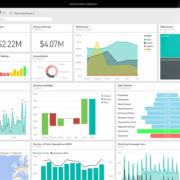Four Tips for Effective Inventory Control
In the manufacturing industry, it’s not just important to have an accurate up-to-date account of your company’s inventory, it is absolutely necessary for your company’s survival. Many businesses may think they’re keeping a sufficient record of their inventory by simply storing their yearly count in Excel or QuickBooks.
This blog post will discuss four tips to optimize your inventory control strategy.
Accurate inventory records
While shutting down operations at the end of each year and counting inventory allows you to start the new year with a clean slate is one advantage to performing an annual physical count. The disadvantages of annual physical counts typically outweigh the benefits. Some of the drawbacks to annual physical counts include:
- Shipping and receiving operations must be shutdown to count all inventory
- The inventory process can be time and resource consuming
- Inventory processes which are not automated have a higher likelihood of error
Maintaining accurate inventory records can be a matter of life and death for your company. That’s why many companies invest in Distribution Management or ERP software like Acumatica to manage what is issued (what goes out) and receipts (what goes in) of their warehouses and the resulting balance. Another way to effectively track your inventory is to count 100 inventory items to test the accuracy of your inventory records. This is called cycle counting and you might be surprised what it reveals about your inventory control strategy.
Cycle counting is a perpetual counting system where a small subset of inventory, in a specified location, is counted on a specified day. By performing cycle counts, you are regularly validating the accuracy of the inventory in your system. This method of counting is popular among large scale organizations that have an extensive number of items in inventory and cannot be closed for a long period of time to perform an annual physical inventory count.
Cycle counting and software are both used to:
- discover process errors and inefficiencies
- improve accuracy & productivity
- provide better customer service with more accurate records
- fulfill orders with certainty knowing that items are in stock when ordered
- reduce inventory which is one of the easiest ways to cut operation costs
Proactive planning
Having a proactive plans in business is an absolute must, inventory tracking is no exception to the rule. Proactive planning helps your company avoid shortages and overstocked products. To come up with your business’ plan consider how much inventory is needed on a normal basis, take notice of what times in the year your product demand spikes and slows down. This will take a little research on your company’s part but it is well worth it.
It is also a good idea to always keep a safety stock handy. Safety stock is an extra batch of your most ordered products that has been set aside in case of a huge order or a schedule crisis due to the late arrival of your supplier’s truck to replenish your inventory. Bottom line, make provisions for the various factor changes that can, and inevitably will, happen over time such as shrinkage factor, yield allowance and padded lead times.
Focus on improvement
Look to improve your inventory control strategy, which ultimately avoids shortages while maintaining the lowest amount of inventory necessary. Often times the best teacher for what your company needs is trial and error. Try making small adjustments to your normal inventory quotas to see what may be slightly under or overstocked. These inventory tweaks ultimately save your company time and money in the long run. Of course, you’ll want to do this within a predetermined product, so your company needs to decide on a safe quantity exploring range before making vast changes.
Leave room for order fluctuations, especially when fine tuning your inventory control strategy. This means having a safe stock to fulfill orders. But don’t play it too safe, keep in mind that the best way to reduce inventory while maintaining or improving availability is to account for order fluctuations.
Reduce lead times and lot sizes
Finding the right lead time to replenish your inventory is important to reducing the cost of operations. When using longer lead times, the risk of variation is greater and the accuracy of forecasts is lower. Not to mention with longer lead times more inventory is necessary to keep from being understocked, which can cause back orders and unhappy customers.
Economic order quantity (EOQ) is often used to determine replenishment lot size. By evaluating the ordering and carrying costs, EOQ finds the lowest cost for the next replenishment order quantity. This then can be used to reduce fixed ordering costs thus reducing inventory.
If you take nothing else away from this blog post, remember to:
- Improve inventory accuracy by cycle counting a certain number of items every day or week (more frequently for more important items)
- Improve forecast accuracy by collaborating with customers and distributors
- Implement integrated systems like ERP, warehouse management systems, and automated data collection that will improve accuracy, operations and increase revenue
- Reduce lead time to reduce inventory, cost of operation and improve forecast accuracy
- Become more reliable by tightening up your company’s procedures and inventory controls
Clients First is rated in the top 1% of VARS for quality ERP implementations, and we recommend Acumatica for services, and manufacturing. If you are in IT, you will love Acumatica as the coding is clean. If you are a CFO, you will love Acumatica because there is no “pay per user” fee and it can be used both on or off premise. For further information, please call 800.331.8382, or email sales@www.clientsfirst.flywheelstaging.com.




